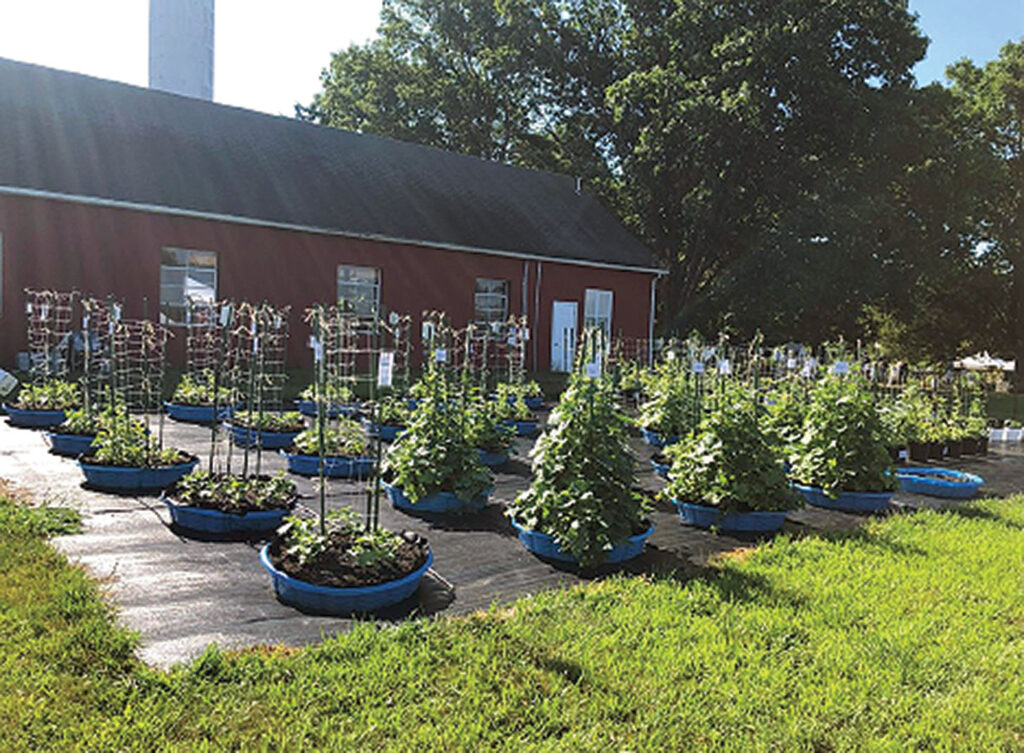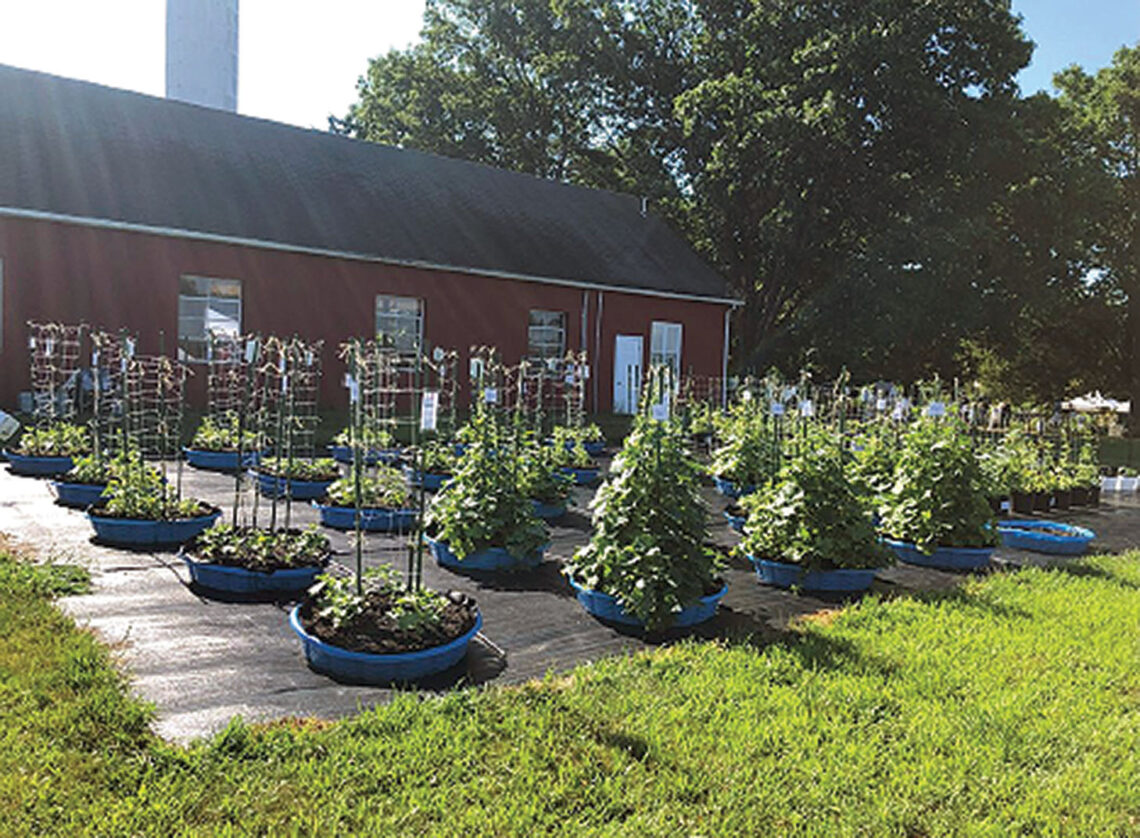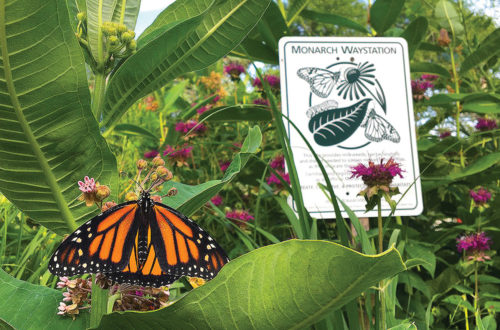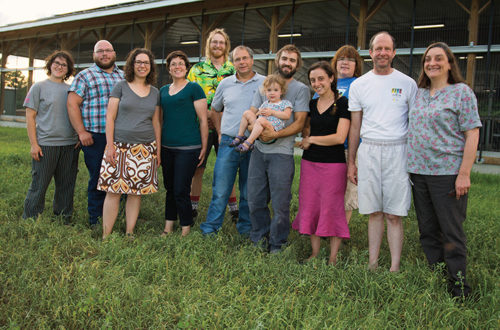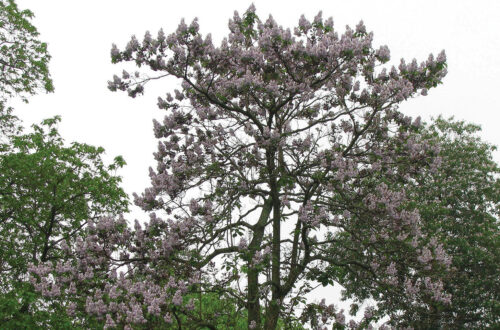Pollinator Conservation – Monarch, Butterflies & Bumblebees
Pollinator populations have been declining for the past several decades. One of the causes we, as Connecticut gardeners, have control over is the lack of available nesting, foraging, and overwintering habitat. To support pollinator populations, we need to provide, maintain, and protect habitats to support all the life stages of pollinating insects. For example, monarch butterflies lay eggs on and caterpillars feed exclusively on milkweed, but the butterflies forage on nectar from various flowers that bloom from May to October. Similarly, in the summer bumblebees feed from blooming flowers, but bumblebee queens need to find a safe place to overwinter in the fall and build a nest in the spring. Focusing solely on floral habitat restoration is a great start but may not be sufficient. At CAES, we are conducting studies to understand habitat needs to support all the life stages of monarchs and bumblebees. This information will provide a benchmark and serve as a model to support other beneficial species.
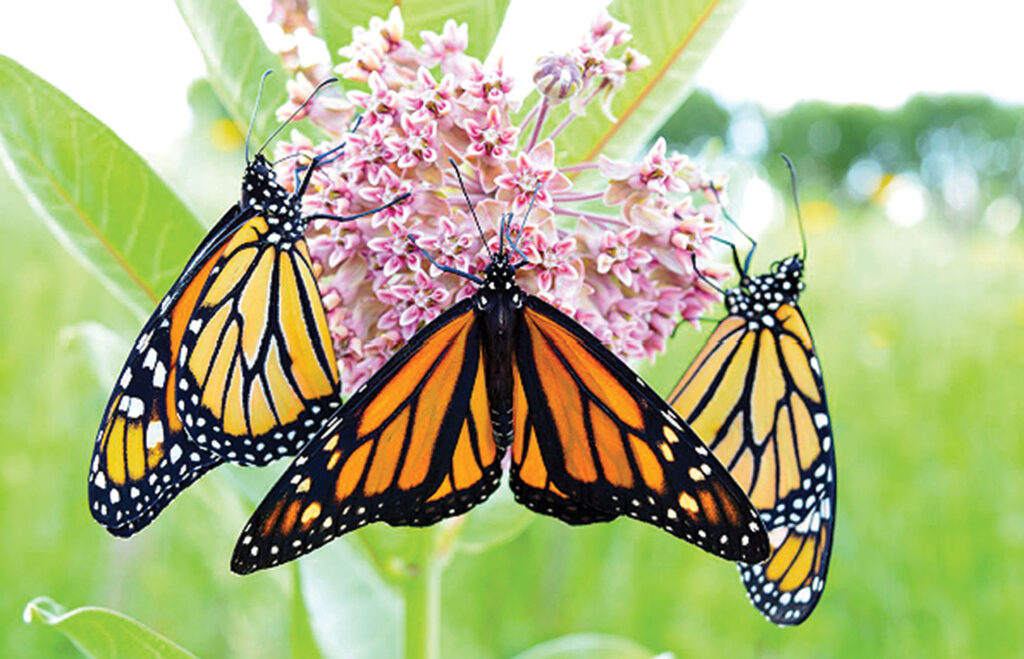
The CT Agricultural Experiment Station is conducting studies to understand habitat needs to support all the life stages of monarchs and bumblebees. This information will provide a benchmark and serve as a model to support other beneficial species.
The Connecticut Long-Term Wild Bee Monitoring Program
Wild native bees are a very diverse group of insects, with 378 species in Connecticut. Despite their role as important pollinators, most go unnoticed and live in the background of our lives. There is evidence of decline in certain species of bees in Connecticut, some species are stable, and other bee species are increasing in abundance. However, more records are needed for many to accurately assess their status. The Connecticut Long-Term Wild Bee Monitoring Program was created to learn more about where wild bee species live in Connecticut, and to identify threats to their survival in our landscape.
Addressing Nitrogen Fertilizers to Reduce Environmental Problems
Nitrogen (N) fertilizer is the most important plant nutrient; without it plants will not grow, and 50% of the world’s human population would face starvation. Unfortunately, only a small fraction of applied N is utilized by plants. The preponderance of it is lost through leaching, in addition to atmospheric volatilization and emission. Scientists at CAES are evaluating strategies to minimize N loss, thereby improving its availability to plants. As an example, CAES scientists use nanocellulose to mitigate N loss through leaching. Nano-cellulose are tiny biomaterials produced from plant’s cellulose. When formulated with urea fertilizer (1 or 2 weight % of the fertilizer) significant reduction of N leaching by 39-45% was obtained depending on the quantity of nano-cellulose used. This finding suggests that nanocellulose can be utilized for mitigating N loss in soil, with beneficial outcomes for crop production, resource management, and environmental sustainability.
Changes in Forest Composition Following Pest & Pathogen Invasions
Forest composition in Connecticut is changing in response to canopy tree decline and mortality from pest and pathogen invasions. Canopy gaps increase understory light availability, which can promote tree regeneration. However, the size of canopy gaps may not be sufficient to recruit regenerating trees into the overstory, and increases in understory light availability can also promote the spread of non-native, invasive plants. Research in the Department of Environmental Science and Forestry is investigating how understory plant community composition and tree regeneration is changing in response to canopy tree decline and mortality from Emerald Ash Borer and Beech Leaf Disease – two prevalent and damaging invasive forest pests that are now ubiquitous across the state. In particular, this work investigates how forest management interventions can promote native-dominated understory plant communities and tree regeneration following catastrophic losses of overstory tree species in Connecticut’s forests.
Backyard Tick Management by Treating Animal Hosts
All species of ticks, including Connecticut’s blacklegged (“deer”) tick (Ixodes scapularis), require a blood meal from a host to progress to the next life stage. The ecology of this human pathogen vector is well known, so we are aware of when certain life stages are going to be feeding on preferred animal hosts. Scientists in the Departments of Entomology as well as Environmental Science and Forestry, operating under the Center for Vector Biology and Zoonotic Diseases, have been researching host-targeted tick treatments with significant competitive funding awarded from the Centers for Disease Control and Prevention. Ongoing research efforts using a very low dose orally delivered systemic pesticide approach (much like treating your dogs for ticks and fleas) is being experimented with by treating small rodents in early and late summer as well as treating deer in the fall to target and kill nymphal and adult stages of feeding blacklegged ticks. The hope is that feeding these animal hosts treated bait will help reduce tick abundances at the town-wide level and reduce pathogen infection, which should help to lessen risk to humans and domesticated animals.
Beech Leaf Disease: A New Disease Threatening Two Iconic Species of Connecticut Forests & Landscapes
Beech Leaf Disease (BLD), caused by the foliar nematode, Litylenchus crenatae mccannii, was first discovered on American beeches (Fagus grandifolia) in Ohio in 2012. Since then, the disease has been found on both American and European beech through much of the eastern United States and Canada, including Connecticut. The disease, first found in Connecticut in 2019 in Fairfield County, is now found in all eight Connecticut counties. Symptoms include dark interveinal banding of leaves, tip dieback, bud failure, with symptoms increasing and worsening in subsequent years, resulting in canopy thinning and in some instances death of the tree. CAES scientist Dr. Robert Marra has installed and annually measures 11 long-term forest plots distributed throughout the state, and he is developing a DNA fingerprinting system to use in testing hypotheses on the spread of the disease and on the origins of new infections.
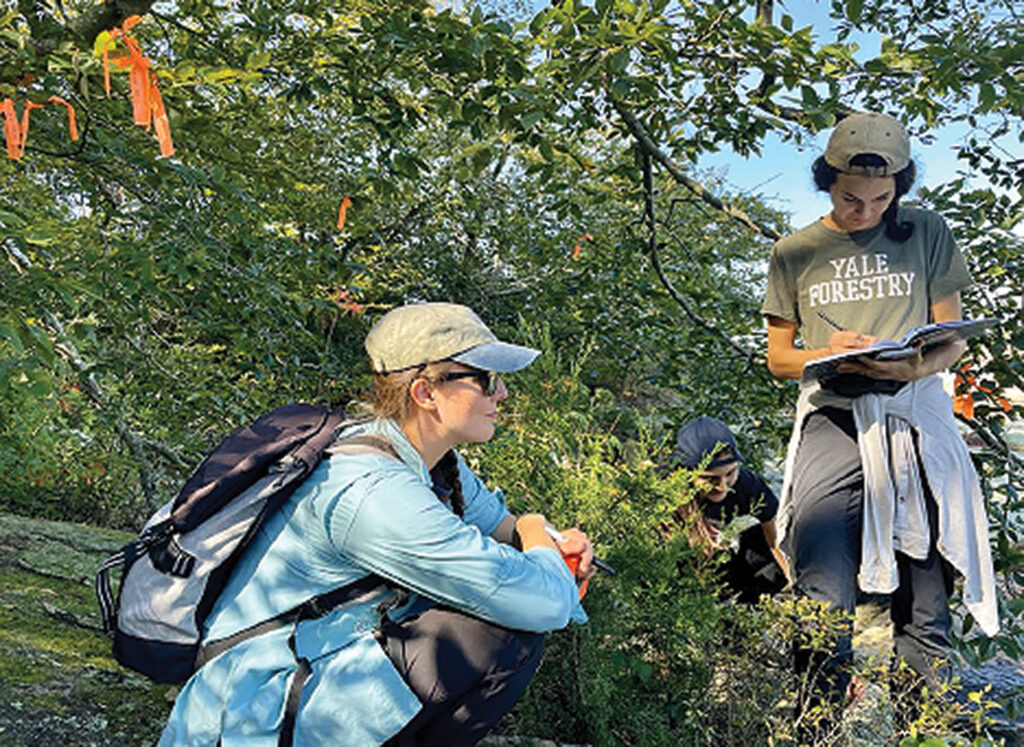
Using Soil Predators to Promote Plant Health
Healthy soils are filled with single celled organisms called protists. Protists prey on bacteria and fungi, which can decrease the pathogen load and increase the activity of beneficial bacteria. Two teams at CAES have identified groups of protists that are prevalent on crop roots and leaves in Connecticut, and have identified the beneficial bacteria that are helped by the protists. This will help determine whether protists can be used as a strategy for organic fertilization or disease control.
Understanding Nematode Virulence to Develop Better Control Tools
Root-knot nematodes (RKN, Meloidogyne spp.) are the most devastating plant-parasitic nematodes worldwide, capable of attacking over 5,000 species of plant hosts. To successfully parasitize a host, RKN induces the formation of large galls, or “knots,” in the host root system. These galls block the root vessels and ultimately reduce yields or cause total crop loss. Scientists at CAES are studying the biological processes that govern nematode parasitism and how these processes can adapt to changes in their environment. This knowledge is essential for understanding the components driving this pathosystem and for identifying new targets that can lead to effective and long-lasting mitigation strategies.
Deer Damage
Overpopulation of white tailed deer leads to damage to crops and valued ornamental plants in our landscapes. Two repellents were designed based on animal fats and related chemistry. A test during the summer for protecting soybeans demonstrated that a lanolin-based deterrent was equal to or superior to a commercial product based on the body fat of sheep. An additional repellent based on milkfat was tested during the winter and was also effective. Yew shrubs treated once in late autumn with any of these repellents were not tasted by deer through the winter, whereas all untreated shrubs were browsed.
Research in Urban Agricultural Practices
A scientist in the Department of Environmental Science and Forestry is researching urban agricultural practices which cover several areas of vegetable production. One focus is the development of best management practices for cut-and-come-again, or repeated harvesting of greens such as lettuce, spinach, and kale. This includes controlled experiments and research involving greens producers from within the State of Connecticut. Another area of focus is the effect of nutrient management on nutrient leaching from urban farms, which can contribute to eutrophication, or the rapid growth of plants in aquatic systems, which can be extremely problematic. Small plastic pool container vegetable production is also being explored as a scalable, low-cost production alternative where clean soil or growing space is in limited availability in urban areas.
Addressing Phosphorus Fertilizers to Reduce Environmental Problems
Phosphorus (P) is the second most important crop nutrient after nitrogen. However, P global stocks are finite, and plants are severely challenged as to how they use P in fertilizers. More than 70% of applied P is lost due to surface run-off, leaching, or through binding to other soil components. Scientists at the CAES are working to address low P use efficiency by plants through developing improved P-fertilizer products that permit the use of lower P rates and limit P losses, thereby improving crop productivity per unit fertilizer applied.
Biological Control of Hemlock Woolly Adelgid (HWA)
Connecticut has been managing exotic HWA threats to eastern hemlock forests with biological control releases of a tiny specialist lady beetle HWA predator, Sasajiscymnus tsugae, for 29 years (since 1995) through the Valley Laboratory. Biological control releases with S. tsugae provide an invaluable alternative strategy to manage HWA infestations without chemicals, especially in sensitive wetland and riparian corridors and this approach is also very popular with homeowners and the general public. As more than 70% of Connecticut’s hemlocks occur on private lands, expansion of biological control with S. tsugae is an important mission to target other Connecticut hemlock forests threatened by HWA resurgence and spread. This has been achieved through a network of state and private collaborators, town conservation commission members, land trusts, water companies, bird sanctuaries, private lake associations and more. More recently, federal funding through the Partnership Wild and Scenic Rivers Program has facilitated the release of >21,000 S. tsugae to protect the Upper and Lower Farmington River and Salmon Brook from 2021-2023. Over 263,000 S. tsugae have been released throughout Connecticut on state, public and private lands since 1995 with more planned for 2024.
Invasive Aquatic Plant Program Helps Protect Lakes, Ponds & Rivers
Weed choked waterbodies are becoming increasingly common. The CAES Invasive Aquatic Plant Program has researched solutions to this problem for nearly 30 years. Surveys of over 350 Connecticut lakes and ponds found over two-thirds contain one or more invasive plant species. Often a species is present due to its preference for a specific water chemistry. Controlling aquatic plant problems involves deciding on the best path forward given options such as harvesting, herbicides, water level manipulation, bottom barriers, weed eating fish, etc. Often control methods are limited by cost, logistics, and potential harmful side effects. CAES has studied each option and has successfully eliminated or substantially reduced nuisance aquatic plant problems from many waterbodies. To learn more about our work, schedule an aquatic plant survey, or talk to one of our scientists see https://portal.ct.gov/caes-iapp
Investigating Methods to Prevent Phytophthora Root Rot
CAES is investigating methods to prevent phytophthora root rot from infecting plants. These efforts are based on the known characteristics of “suppressive soils,” in which biological and mineral components of certain soils allow susceptible plants to thrive even when phytophthora is present. Factors being investigated as components or together are the addition of high-cellulose organic matter, adequate fertility to stimulate microbial activity, a high calcium soil environment, and a modest addition of elemental sulfur to stimulate certain phytophthora-antagonistic microorganisms.
Weed and Invasive Plant Management
CAES is conducting research on understanding the biology and ecology of weeds of ornamental nurseries, Christmas tree plantations, and non-native invasive plants. We are conducting herbicide screening trials for weed efficacy and crop tolerance, weed resistance, and are discovering chemical and non-chemical solutions for weed management. CAES outreach and extension activities involve problem solving such as weed identification, herbicide injury diagnosis, and advisory on invasive plant management and weed control in specialty crops.
Maintaining White Oak in Our Forests
While oaks are the predominant canopy tree species over much of southern New England, obtaining oak regeneration is problematic through the region, especially white oak (Quercus alba) regeneration. Earlier research has demonstrated that precommercial crop tree release (PCTR) increases growth and persistence in an upper canopy position of northern red oak saplings. To maintain white oak as part of the Connecticut forest, CAES established three study areas in 2021 where white oak saplings were released from competition. Early results indicate that PCTR increases white oak growth by 45-220%.
Biocontrol of Fire Blight in Connecticut
Fire blight is the most devastating disease of tree fruit crops such as apple and pear. Control of this disease is through spraying antibiotics to kill the pathogen, which is not sustainable and also causes concerns to the environment. CAES scientists identified a new strategy to control this disease through inducing host defense with some beneficial members of the apple microbiota. By spraying these beneficial microbes to the apple flowers, the apple defense genes are highly induced. This defense induction offsets the defense suppression caused by the pathogen and suppresses the disease infection. This strategy has been commercially adopted by many apple orchards in New England.
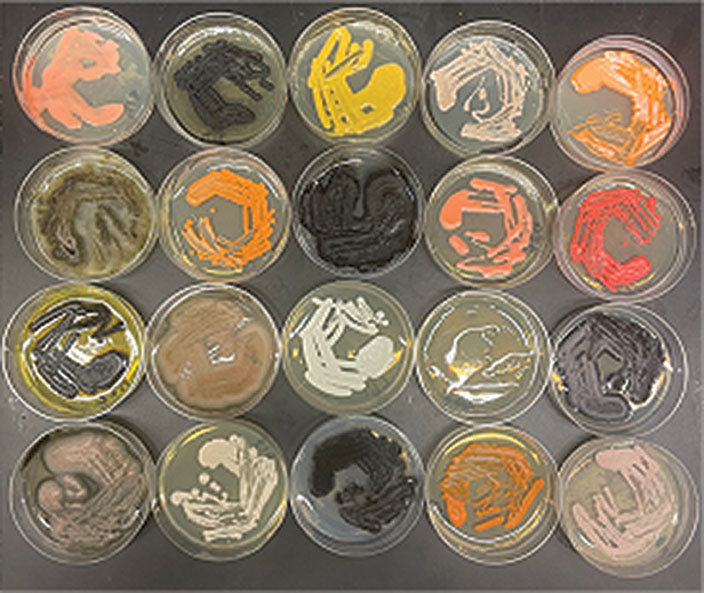
Nanocarriers for Delivery of Plant Vaccines
Plant cells have the molecular machinery to read genetic information and create proteins from such information. However, this machinery can be used by pathogens such as viruses to replicate their own genetic material using the host cells. To defend against viral infections, plants utilize a gene-silencing technique, RNA interference (RNAi) to recognize specific regions from the invading pathogen’s genome and code for its destruction. These regions of the viral genome (as double stranded RNA, dsRNA) can be supplied to plants to trigger the activation of the defense mechanism, acting as a vaccine. However, the effective delivery of viral genetic material to plants is challenging because it can be washed out or degraded before being used by the plant. To successfully activate the RNAi mechanism, CAES scientists are utilizing nanoscale materials that can hold, protect, carry, and successfully deliver dsRNA to protect plants against viral infections.
Application of Novel Sulfur-based Materials to Suppress Plant Diseases
Pathogens reduce crop yields by up to 20% and compromise product quality, often leading to 40% loss in harvestable produce. However, the use efficiency of conventional pesticides and fertilizers by plants is often below 30%, leading to environmental damage from accumulated nutrients. Sulfur (S) is a secondary nutrient involved in the synthesis of amino acids and proteins. Application of S to control plant bacterial and fungal diseases has become common. The Center for Nano-scale Sulfur Research (CeNaSR) at the CAES was created in 2020 to investigate the application of chemically modified S nanomaterials for sustaining crop productivity under the pressure of diseases as compared to conventional S.
Pesticide Surveillance in Raw Agricultural Commodities
The CAES analyzes nearly 200 samples annually as part of its pesticide monitoring program. Over 300 pesticide residues are screened for in fruit and vegetable produce using a combination of liquid chromatography high resolution mass spectroscopy (LC-HRMS) and gas chromatography tandem mass spectroscopy (GC-MS/MS). Violation rates are low, typically between 2-4%, and results are reported to CT Department of Consumer Protection and the U.S. FDA. This work is part of the CT Agricultural Experiment Station’s efforts to ensure residents are not exposed to banned or high levels of pesticides.
Urban Tree Health and Mycorrhizal Inoculations
Urban tree health can be boosted by various treatments that aim to improve the condition of the root system. With the intensifying impacts of climate change, information on the most effective methods to reduce tree stress in young trees is needed both in nurseries and in urban areas. Preliminary data from CAES researchers indicates that mycorrhizal inoculation has potential to improve drought stress tolerance in maples. Current work is focused on studying the impact of mycorrhizal inoculation on chestnut stress tolerance and plans to study the impact of mycorrhizal inoculation on tree health in urban conditions.
Urban Agriculture Techniques to Increase Production & Fertilizer Use Efficiency
A new CAES research initiative centers around vegetable production using techniques that enable greater production in urban areas. One project is focused on the use of small plastic pools as containers, which offer more growing area at a lower cost than other available containers. The current experiment will 1) to compare cucumber production in pools to traditional nursery pots, 2) to find the optimal growing media/compost mixture, and 3) to optimize the drainage strategy (drainage hole and pine bark placement) for growing vegetables in pools. Another project is focused on cut-and-come-again harvesting of kale. Cut-and-come-again is a harvesting technique where a crop is harvested, but the plant is allowed to continue to grow, enabling multiple harvests.
